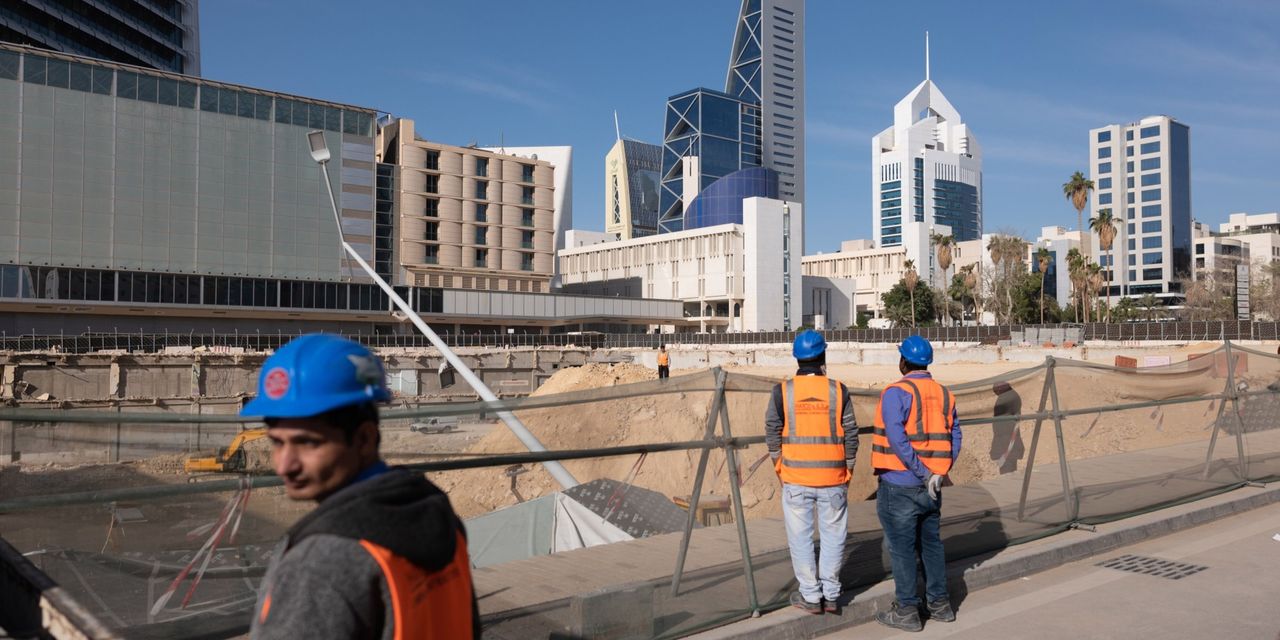OPEC showed it still matters in oil markets this past week, pushing crude prices up more than 5% by announcing a one million barrel-a-day output cut. Its core Middle Eastern members increasingly count in equity markets, too.
Saudi Arabia entered MSCI’s global emerging market indexes in June 2019. Since then, the
iShares MSCI Saudi Arabia
exchange-traded fund (ticker: KSA) has gained 20% while global emerging markets are flat.
That’s not just about oil. Six of the top 10 Saudi stocks are banks, which benefit from a large base of zero-interest deposits thanks to Islamic Sharia law. Most of their assets are floating-rate corporate loans, which has spelled soaring profits as interest rates rise, says Dipanjan Ray, head of global equities research at Emirates NBD Asset Management. A pegged currency protects that bottom line in dollar terms.
Crown Prince Mohammed bin Salman’s drive to liberalize Saudi society has extended to capital markets that formerly kept global capital out. “They’ve executed on a plan to transform the stock market by making foreigners welcome,” says David Aserkoff, J.P. Morgan’s regional equity strategist.
Neighboring leaders have followed suit. That’s led to a flood of initial public offerings, and broader portfolio choices. Last year smashed all records, with 51 IPOs raising $22 billion across the Middle East. “It’s a bit like a gold rush now,” says Emre Akcakmak, a Dubai-based senior consultant to emerging markets investor East Capital. “The region emerged as a winner after Covid.”
Investors won’t find treasure under every rock. The Saudi index fell by a quarter last May to December as oil prices cooled and markets looked toward the end of the global tightening cycle driving bank profits. Some new market entrants shone nonetheless.
Shares in Saudi payments processor
Elm
(7203.Saudi Arabia) have doubled since an IPO in February 2022.
Arabian Internet & Communications Services
(7202.Saudi Arabia), a spin-off from state-owned Saudi Telecom, has gained 40% since hitting markets in late 2021.
Americana Restaurants
(6015.Saudi Arabia), the regional franchisee for KFC and Pizza Hut, is up by a third since going public last December. Dubai-based toll road operator
Salik
(SALIK.United Arab Emirates) has climbed by a quarter since October.
“This is a very young market on the consumer side, with some very interesting companies going public,” Akcakmak says.
Oil is not irrelevant for any Middle Eastern stock. “Oil lubricates the non-oil economy,” says Tarek Fadlallah, CEO of Nomura Asset Management, Middle East. “The correlation between stock and oil prices remains high.”
But the region may be catching structural tailwinds beyond petroleum cycles. Saudi Arabia could be in line for a world-class “demographic dividend,” with a median age below 30. (The U.S. figure is 38.5.) The surge of women heading into the workforce following bin Salman’s reforms provides an extra economic charge.
Global interest rate expectations are shifting toward higher for longer, a potential boon for those banks that get so many of their deposits for free. Most surprisingly, after half a century as the world’s presumed powder keg, the Middle East could be tacking toward stability, while U.S.-China tensions roil East Asia. Foreign ministers from Saudi and archrival Iran met in Beijing this week, building on a surprise agreement to restore diplomatic relations.
“I’m always seeing new faces at the investment conferences,” Emirates NBD’s Ray says. “Sooner or later, they’ll become investors.”
Keep it in mind.
Email: [email protected]
Read the full article here










